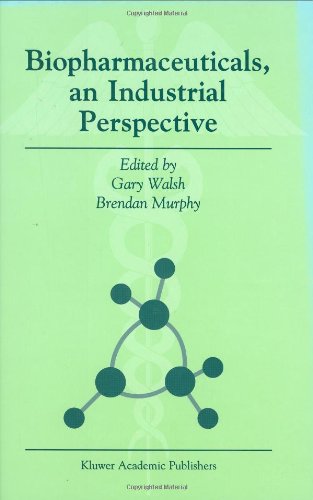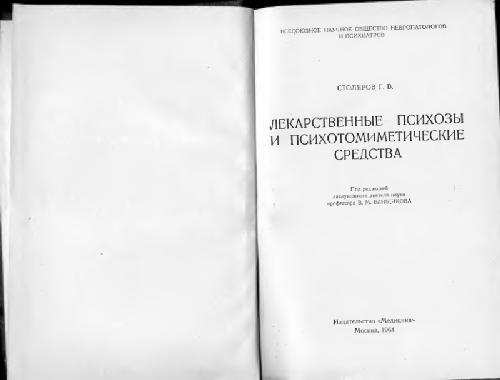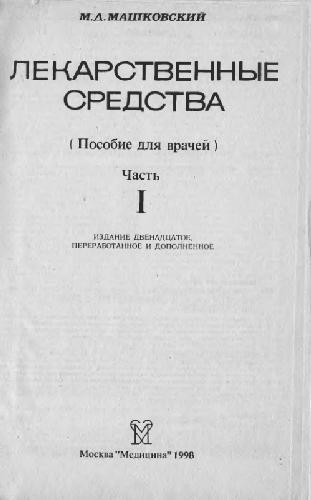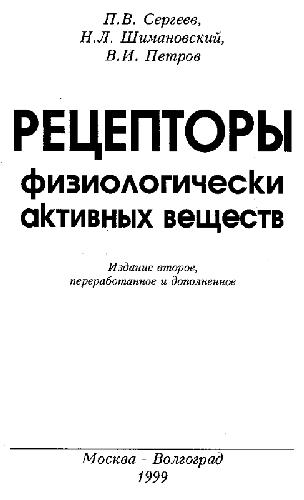G. Walsh, B. Murphy9780792357469, 0-7923-5746-9
Table of contents :
Index……Page 0
Front Matter……Page 1
Contributors……Page 3
Acknowledgements……Page 5
Preface……Page 7
Table of Contents……Page 9
1. Biopharmaceuticals, An Overview……Page 13
1. Development of the Pharmaceautical Industry……Page 14
1.1 The Birth of the Biopharmaceutical Industry……Page 15
1.2 Biopharmaceuticals; Market Value……Page 17
2. Sources and Manufacture of Biopharmaceutical Products……Page 18
2.1 Upstream Processing……Page 19
2.2 Downstream Processing……Page 20
3.1.1 Blood Clotting Factors……Page 22
3.1.2 Anticoagulants……Page 23
3.1.3 Thrombolytic Agents……Page 24
3.2 Therapeutic Enzymes……Page 25
3.3 Recombinant Therapeutic Hormones……Page 26
3.4 Haemopoietic Growth Factors……Page 30
3.5 Interferons and Interleukins……Page 32
3.6 Recombinant Vaccines……Page 36
3.7 Monoclonal Antibody Based Products……Page 37
4.1 Gene Therapy……Page 40
5. Future Trends……Page 42
References……Page 43
2. Abciximab: The First Platelet Glycoprotein IIb/IIIa Receptor Antagonist……Page 47
1.1 The GP IIb/IIIa Receptor as a Target for Antithrombotic Therapy……Page 48
1.2 Development of Abciximab……Page 49
2.1 Binding Studies……Page 51
2.2 Dose-Response Studies……Page 53
2.3.1 Abciximab Alone……Page 54
2.3.2 Abciximab Combined with Fibrinolytic Agents……Page 55
2.5.2 Inhibition of Inflammatory Processes……Page 56
3.1 Dose-Response Studies in Humans……Page 57
3. Recombinant Coagulation Factor IX (Benefix®)……Page 85
1. Introduction……Page 86
2. Mechanism of Action……Page 87
3. Development of the Production Cell Line……Page 88
3.1 Preparation of the rFIX Coding Sequence……Page 90
3.2 Cell Line Development……Page 91
3.4 Preparation of the PACE-SOL Coding Sequence……Page 92
4.1 Characterization of the Cell Banks and End-of-Production Cells……Page 93
4.2.2 Growth Rate……Page 94
4.2.3 Cellular Productivity……Page 95
4.2.5 Characterization of Expression Vectors and Transcripts……Page 96
4.3 Evaluation of Genotypic and Phenotypic Stability……Page 97
5.2.1 Ultrafiltratiod Diafiltration……Page 99
5.2.4 Ceramic Hydroxyapatite Purification……Page 100
5.3 Product Formulation……Page 101
1. Introduction……Page 121
1.1 Producer Cell Line……Page 123
1.3 Patent Issues……Page 124
2. Preclinical Studies……Page 125
3. Clinical Trial Findings……Page 126
5. Summary of Dossier Preparation and Experience of Getting it Through Regulatory Agencies……Page 129
6. Additional Technical/Business Matters……Page 130
Acknowledgements……Page 131
1. Introduction……Page 137
2.2 Gene Cloning……Page 139
2.3 Construction of the Expression Vector and Selector Plasmid……Page 140
3. Production and Purification of Recombinant FSH……Page 141
4. Characterisation: Purity and Identity……Page 142
4.2 Identity……Page 143
5.2.2 In Vivo Studies……Page 144
5.3.1 Introduction……Page 145
5.3.2 Single-Dose Studies……Page 146
5.3.3 Multiple-Dose Studies……Page 147
5.4.1.1 Pilot Efficacy Study in IVF……Page 148
5.4.1.2 Pivotal Trial……Page 149
5.4.1.3 Supportive Trials……Page 151
5.4.2 Ovulation in Clomiphene Resistant Normogonadotropic Anovulatory Women……Page 152
5.5 Discussion of Findings in the Development……Page 154
6. Quality Control……Page 155
7. Final Product Formulation and Format……Page 156
8. Conclusion……Page 157
References……Page 158
1. Introduction……Page 161
1.1 Biotechnology Leading to Insulin Lispro……Page 163
1.2 Manufacturing Process for Insulin Lispro……Page 168
1.3 Toxicopharmacologic Effects……Page 169
1.4 Reproduction and Teratology Studies……Page 171
1.5.1 Pharmacokinetics and Glucodynamics……Page 172
1.5.2 Global Registration Studies……Page 173
1.5.3 Insulin Lispro In Continuous Subcutaneous Infusion Therapy……Page 174
1.5.5 Paediatric Use……Page 175
1.6 Summary……Page 176
References……Page 177
1. Multiple Sclerosis and Interferon Beta-1B……Page 185
2. Clinical Trials……Page 187
3. Product Approval……Page 188
4. Adverse Effects……Page 189
5. Mode of Action……Page 191
Biography……Page 194
References……Page 195
1. Introduction……Page 197
2.1 Molecular Structure……Page 198
2.3 Molecular Weight……Page 199
3.2 The Open-Artery Theory and Thrombolytic Therapy……Page 200
3.3 Problems with First- and Second-Generation Thrombolytics……Page 201
3.4 Profile of the Ideal Thrombolytic……Page 202
4.1 Analysing Structure-Function Relationships Within the t-PA Molecule……Page 203
5. Comparison of the Biochemical Properties of Reteplase and Alteplase……Page 204
5.1 Cleavage by Plasmin……Page 205
5.4 Inhibition by PAI-1……Page 206
5.5 Affinity for Fibrin and Lysine……Page 207
5.6 Expression of Reteplase in E. Coli……Page 208
6.1 Clot Lysis in Vitro: Static Model……Page 209
6.2 Dynamic Plasma Clot Lysis Model……Page 210
6.3 Clot Penetration Studies in Vitro……Page 211
6.6 Animal Pharmacokinetics……Page 212
7.1.1 Healthy Subjects……Page 213
7.2.2 Following AMI……Page 214
8. Clinical Data……Page 215
8.2 GRECO-DB……Page 217
8.4 RAPID-2 Study……Page 218
8.6 GUSTO-III Trial……Page 219
8.7 Safety Profile of Reteplase……Page 220
9.2 Relative Contraindications (61)……Page 221
10.2.1 Organoleptic Characteristics……Page 222
10.2.7 Stability……Page 223
Biography……Page 224
References……Page 225
1. Introduction to Biopharmaceuticals……Page 229
2. Why is Stabilisation Important?……Page 230
3. Strategies for Stability Evaluations……Page 231
4.1.1 Unfolding……Page 232
4.1.2 Aggregation and Precipitation……Page 233
4.1.3 Adsorption……Page 234
4.2.1 Deamidation……Page 235
4.2.2 Oxidation……Page 236
5. Overview of Production Processes for Proteins……Page 237
6.2 Bulk Drug Substance……Page 239
6.3.1 Storage Conditions……Page 240
6.3.2 Storage Containers……Page 241
7.1.1 Clinical Considerations……Page 242
7.1.2 Regulatory Considerations……Page 243
7.2.1 Solution Stabilisation……Page 244
7.2.1.1 pH Stabilisation……Page 245
7.2.1.3 Stabilisation Through Non-Specific Interactions……Page 246
7.2.1.4 Other Stabilisers and Additives for Solution Formulations……Page 247
7.2.2.1 Stabilisation Within a Glassy Matrix……Page 248
7.2.3 Stabilisation in Novel Drug Delivery Systems……Page 250
7.3.1 Shear Damage……Page 251
7.3.3 Adsorptive Losses……Page 253
9. Conclusion……Page 256
References……Page 257
10. Patent Law for Biopharmaceuticals……Page 261
1.1 Natural Product Patents……Page 262
2.1 Factor VIII Litigation……Page 263
2.2 Erythropoietin Litigation……Page 264
3.1 Nerve Growth Factor Case……Page 265
3.2 Genentech’s UK patent 2,119,904 on Tissue Plasminogen Activator (t-PA)……Page 266
3.4 The Erythropoietin Litigation (Further Developments)……Page 267
4. The Enabling Disclosure Requirement……Page 270
4.1 Erythropoietin in the European Patent Office (Appeal case T412/93)……Page 271
4.2 Recombinant Factor VII Patent……Page 272
5. Therapeutic Antibodies……Page 273
6. Patent Infringement……Page 275
6.1 Genentech v Wellcome Foundation and Genetics Institute (1990)……Page 276
7. Issues for the Future……Page 278
References……Page 279
11. The Development of New Medicines: An Overview……Page 281
1. Discovery of New Medicines……Page 282
1.2 Toxicology Testing……Page 283
1.4 Formulation Development……Page 285
2. From Animals to Humans……Page 286
2.1 Clinical Trial Design……Page 288
2.2 First Clinical Trials in Patients……Page 290
2.3 Surrogate Markers……Page 291
2.4 Phase 3 Clinical Trials……Page 292
3. Regulatory Approval……Page 293
3.1 Marketing……Page 294
3.2 Phase 4 Clinical Trials……Page 295
4. Pharmacoeconomics……Page 296
5. Pharmacovigilance……Page 297
7. Conclusion……Page 298
References……Page 299
1. General Introduction……Page 301
1.2 The European Commission and European Law……Page 302
1.3 Pharmaceutical Law within the EU……Page 304
1.4 The Rules Governing Medicinal Products in the European Union……Page 306
2.1 Structure and Role of the EMEA……Page 309
2.2 Centralized Procedure for Marketing Authorization Applications……Page 311
2.3 Mutual Recognition……Page 313
2.5 Additional EMEA Activities……Page 315
3. New Centralized System……Page 318
4. Conclusion……Page 321
References……Page 322
1. Introduction……Page 323
2.1 The Validation Master Plan (VMP)……Page 324
2.6 Change Control……Page 325
2.13 Retrospective Validation……Page 326
3.1 Design Qualification (DQ)……Page 327
3.2 Installation Qualification (IQ)……Page 328
3.3 Operational Qualification (OQ)……Page 329
3.4 Performance Qualification (PQ)……Page 330
3.6 Methods Validation……Page 331
3.7 Cleaning Validation……Page 332
3.8 Computerised Systems Validation……Page 333
4.1 Procurement……Page 334
4.3 Reviewing Computer System Documents for Compliance with Life Cycle Requirements……Page 335
4.5 Turnover Package……Page 336
4.7 Installation and Construction……Page 337
4.9 Validation Protocols……Page 338
4.12 Gap Analysis……Page 340
4.15 Action Plans……Page 341
5. Biopharmaceutical Facility Characteristics……Page 342
5.2 Sterility……Page 343
5.5 Clean-In-Place (CIP) and Steam-In-Place (SIP)……Page 344
5.6 Utilities……Page 345
5.8 Automation……Page 346
References……Page 347
14. Validation of Biopharmaceutical Chromatography Systems……Page 349
2.1 Typical Processing Steps……Page 350
2.3 Typical Control System……Page 351
2.5 Support Operations……Page 352
2.6 Design Considerations……Page 353
3.1 Prospective and Retrospective Validation……Page 354
3.2 Validation Master Plan……Page 355
3.4 Change Control……Page 357
3.5.2 Control Systems……Page 358
3.7 Design Qualification (DQ)……Page 359
3.7.2 Control System……Page 360
3.8.1 Process Equipment……Page 361
3.10 Operational Qualification……Page 362
4. Summary……Page 364
References……Page 365
Appendix 1: Methods for the Determination of Column Quality Parameters……Page 367
Appendix 2: A Typical Document Matrix……Page 370
1. Introduction……Page 375
2.1.2 Water for Injection……Page 376
3.1 Deep Bed Filtration……Page 377
3.3 Water Softening and Deionisation……Page 378
4.1 Reverse Osmosis……Page 379
5.1 Materials of Construction……Page 380
5.2 Holding and Distribution Systems……Page 381
6.2 Installation Qualification……Page 384
6.4 Performance Qualification……Page 386
6.5 Validation Approach for a New System……Page 388
6.5.1 System Description……Page 389
6.5.4 Operational Qualification……Page 390
6.6.1 System Description……Page 391
6.6.2 System Audit……Page 392
6.6.3 System Review and Sampling……Page 393
6.6.5 Mechanical Modifications……Page 396
7. Conclusions and Recommendations……Page 397
References……Page 398
1. Introduction……Page 401
2.1 Development……Page 403
2.3 CD-ROM……Page 405
3. Information Needs of the Biopharmaceutical Industry……Page 406
3.1 What is Contained in a Bibliographic Database?……Page 407
3.2.1 Define the Search or Information Need……Page 409
3.2.4 Choose Search Terms and Define a Search Strategy or Profle……Page 410
3.2.6 Print or Download the Results……Page 411
3.3 Examples of Database Services that Index Information of Interest to Biopharmaceutical Research:……Page 412
3.4 Some Pertinent Web Addresses……Page 413
4. The Future……Page 415
Biography……Page 416
1. Introduction……Page 417
2. Information in the Corporate Environment……Page 418
2.1 Lab Notebooks – What to Do With Them?……Page 419
2.2 Managing Multiple Sources of Information……Page 420
2.3 Groupware for Intranets and Extranets……Page 421
3.1 Brief History of Bioinformation on the Internet……Page 422
3.2.1 Public Sites……Page 423
3.2.1.2 Nucleic Acid and Protein Sequence Searching……Page 424
3.2.1.3 Public Domain Software……Page 426
3.2.1.4 Journals and Patents……Page 427
3.2.2 Commercial Sites……Page 429
3.3 Search Engines……Page 430
References……Page 431
1. Introduction……Page 433
3. Marketing Plan……Page 434
3.1 Marketing Mix……Page 436
3.2 Differentiation and Product Positioning……Page 439
3.4 Pre-Launch Planning……Page 441
3.4.1 Regional Rollouts……Page 442
4. Primary Market Messages……Page 443
5. Economic Considerations……Page 444
5.1 Product Pricing……Page 447
7. Branding……Page 448
7.1 Creating Market Demand……Page 449
7.2 Product Positioning……Page 450
9. Importance of Training……Page 451
10. Pre-Launch Market Planning……Page 452
References……Page 453
1. Introduction……Page 455
2. Categories of Viral Vectors……Page 457
2.1 Retroviral Vectors……Page 458
2.2 Lentiviral-Based Retroviral Vectors……Page 461
2.3 Adenoviral Vectors……Page 462
2.4 Adeno-Associated Virus Vectors……Page 466
2.5 Additional Virus Vectors……Page 468
2.5.1 Limited Replication Competent Vectors……Page 469
3. Therapeutic Gene Targeting Using Viral Vectors……Page 470
4.1 Gene Therapy and Genetic Disorders…….Page 472
4.2 Gene Therapy and Cancer……Page 474
4.3 Gene Therapy for Infectious Disease: The Aids Model……Page 476
5. Summary……Page 477
References……Page 478
1. Somatic Gene Therapy Myth or Reality?……Page 483
1.1 Plasmid-Based Gene Medicines……Page 485
1.2 Quality of DNA and Manufacture Scale……Page 490
1.2.1 Lipid-Mediated Gene Transfer……Page 491
1.2.2 Polypeptide-Based Gene Delivery……Page 496
1.2.3 Polymer-Based Gene Delivery……Page 498
2. Clinical Perspective of Gene Therapy……Page 500
2.1 Gene Therapy and Genetic Disease……Page 502
2.2 Gene Therapy and Cancer……Page 504
2.3 An Additional Application……Page 507
3. Conclusion……Page 508
References……Page 509
4.3.1 Methods……Page 61
4.3.2 30-Day Efficacy Results…….Page 62
4.3.3 30-Day Safety Results…….Page 63
4.3.4 6-Month Efficacy Results…….Page 64
4.3.5 3-Year Efficacy Results…….Page 65
4.3.6 Subgroup Analyses…….Page 66
4.3.7 Anticoagulant Effect of Abciximab…….Page 67
4.5 The EPILOG Trial: Low-Risk and High-Risk Patients……Page 68
4.5.2 30-Day Efficacy Results…….Page 69
4.5.3 30-Day Safety Results in Contrast to EPIC Results…….Page 70
4.6 Unstable Angina: The CAPTURE Trial……Page 71
4.6.2 Efficacy Results…….Page 72
4.7.2 30-Day Results…….Page 74
4.8.1 GUSTO-III…….Page 75
4.9.3 TIMI-14…….Page 76
5. Conclusions: Current Indications and Future Prospects……Page 77
References……Page 78
6.1 Primary Structure and Posttranslational Modifications……Page 102
6.3 Specific Activity……Page 104
6.4 Purity……Page 105
7.1.1 Identity……Page 106
7.1.3 Potency……Page 108
7.2.2 Purity……Page 109
7.2.5 Quality……Page 110
8. Preclinical Testing……Page 111
9.2 Efficacy in Surgery……Page 112
9.3 Safety……Page 113
10. Registration Strategy……Page 114
Biography……Page 116
References……Page 117







Reviews
There are no reviews yet.